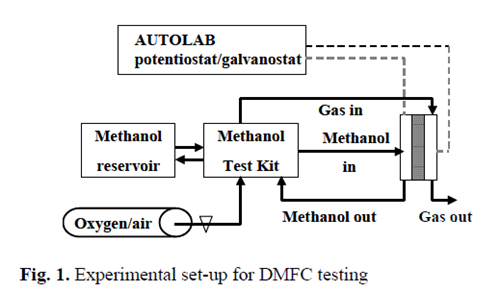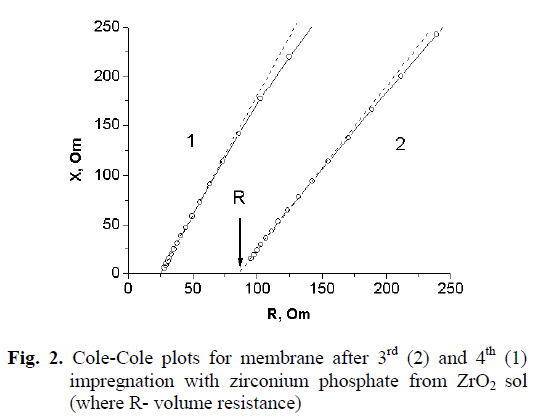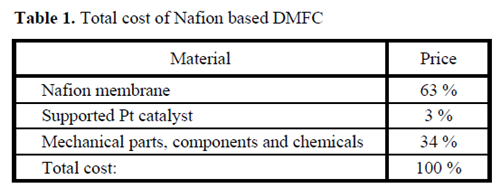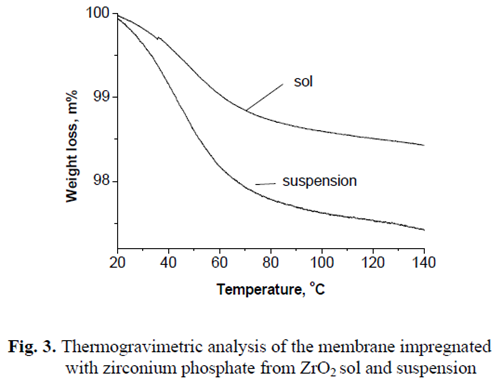Sunshine Factory, Co., Ltd. > Applications > ZrP for Fuel Cell, Lithium BatZrP for Fuel Cell, Lithium Bat
Zirconium Phosphate Based Inorganic Direct Methanol Fuel Cell
Introduction
Direct methanol fuel cells (DMFCs) utilize methanol, in gaseous or liquid form as a fuel. This allows for a substantial system simplification relative to reformate-based FC`s and it has a higher energy density than that is presently available with hydrogen-based systems. However, conventional DMFC`s suffer from methanol crossover due to the permeation of methanol through the polymer membrane.
The methanol that permeates through the membrane then typically reacts with the oxidant at the cathode, resulting in significant fuel inefficiency and reduced cell voltage at higher current, which causes a significant loss in overall cell efficiency. The reduction of methanol crossover has therefore received a lot of attention recently. To reduce crossover, very dilute solutions of methanol are typically used as fuel streams. Recent accomplishments include the development of improved membranes with lower cross-over and with higher selectivity (ratio of conductivity to cross-over rate).
An alternative is to use both inorganic substrate and inorganic filler instead of the traditional organic polymer membrane. Zirconium (IV) phosphate (denoted as ZrP) could be the material of choice as a filler for large scale applications due to its stability in a hydrogen/oxygen atmosphere, its low cost and low toxicity.
ZrP has the ability to increase proton conductivity as a result of high proton mobility on the surface of ZrP particles and it also has good water retention capabilities. In comparison, reduced methanol efficiencies and significant catalyst poisoning occur as a result of the high methanol permeability of commercially available Nafion, a perfluorosulfonate polymer and the current benchmark proton conducting membrane in DMFC applications. The composite approach has recently been used to obtain reduced methanol permeability of the Nafion membrane while maintaining high power density.
The objective of the research undertaken by the research team from the University of the Western Cape was to develop a methanol FC prototype based upon an inorganic, zirconium phosphate proton conducting membrane suitable for full-scale application, with performance characteristics that exceed those of Nafion based methanol FC`s. In addition, high material cost and difficulties with water management in current fuel cells, was also to be addressed.
Experimental


Results and Discussion





Conclusions
A new nano structured and fully inorganic composite ZrP proton conducting material .
The composite inorganic ZrP membranes prepared using the ZrO2 suspension were found to give rise to high proton conductivity.
The proton conductivity obtained was in the order of 10-2 S/cm at room temperature (RH = 100 %), which is comparable to Nafion proton conductivity. An inorganic membrane based direct methanol fuel cell was tested and efficiency equivalent to more than 50 % of the Nafion efficiency was obtained when using standard platinum catalyst inks.

Follow WeChat


